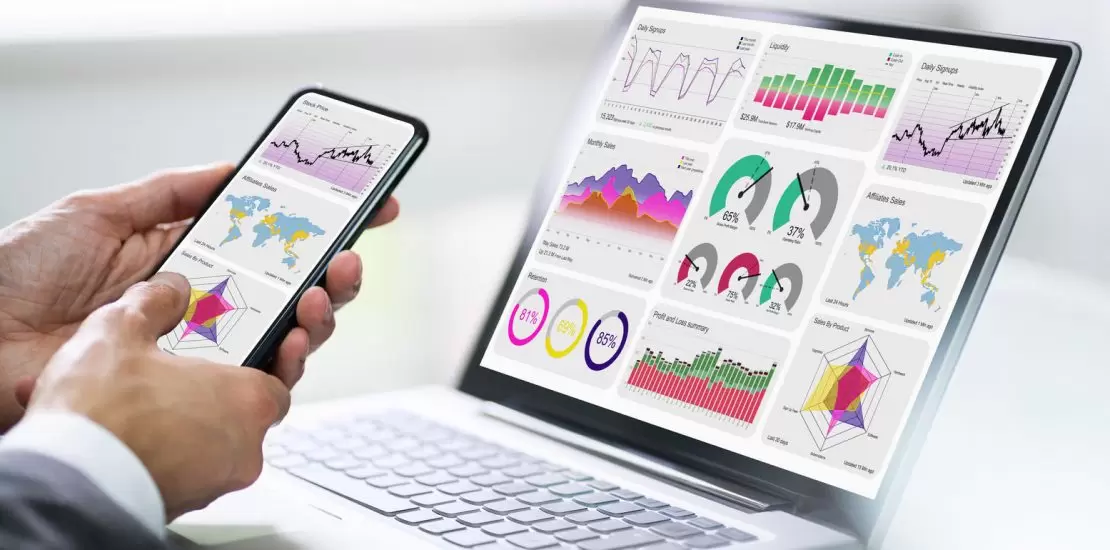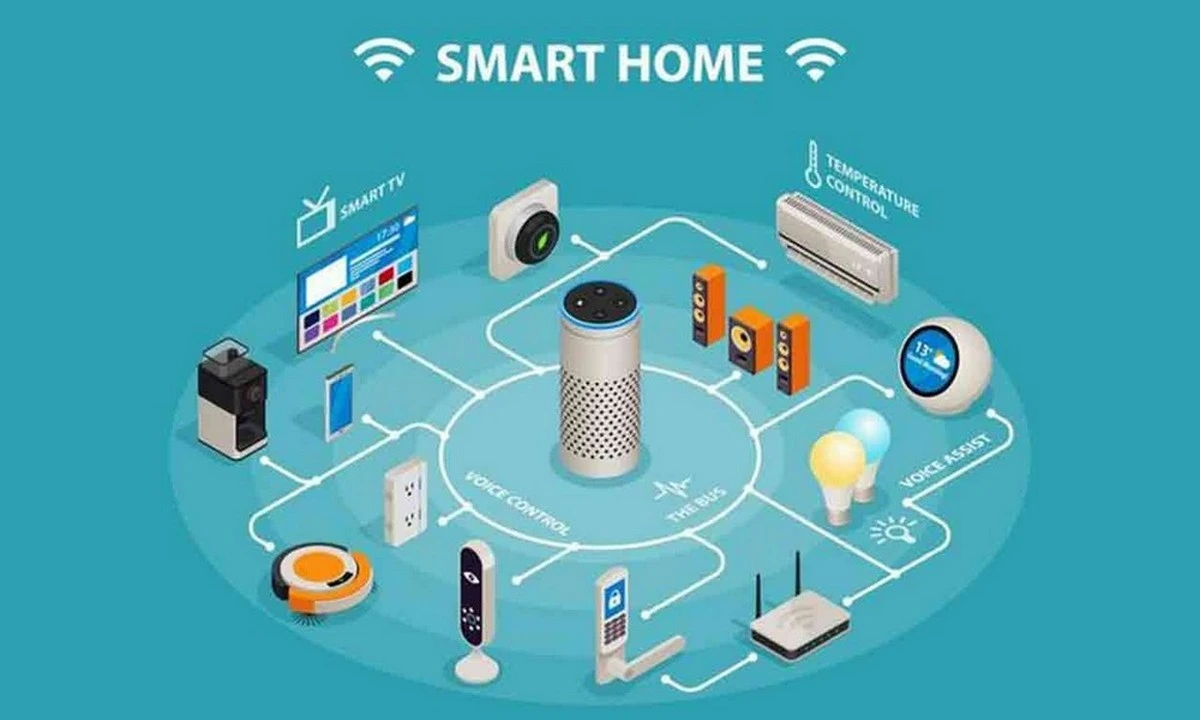Technology never stands still, and neither should professionals who work with it. From smarter machines to privacy-centric cryptography, the following four innovations are reshaping today’s digital landscape. Build familiarity with them now to future-proof your career.
التكنولوجيا في تطور مستمر، وكذلك ينبغي أن يكون محترفو تقنية المعلومات. بدءاً من الآلات الأذكى وصولاً إلى التشفير الذي يركّز على الخصوصية، تعيد الابتكارات الأربع التالية تشكيل المشهد الرقمي الحديث. تعرّف عليها الآن لتؤمّن مستقبلك المهني.

1. Artificial Intelligence: From Reactive Tools to Strategic Partners
الذكاء الاصطناعي: من أدوات تفاعلية إلى شركاء استراتيجيين
Artificial Intelligence (AI) remains the headline act of IT innovation. The newest wave focuses on domain-specific “small” language models and edge AI chips that execute complex reasoning locally—slashing latency while preserving data sovereignty. These advances make AI a practical co-worker rather than a distant cloud service, enabling use-cases like on-device cybersecurity agents and real-time quality inspection on factory floors.
لا تزال الذكاء الاصطناعي يتصدّر مشهد الابتكار في تقنية المعلومات. تركّز الموجة الأحدث على نماذج لغوية صغيرة متخصّصة ورقائق ذكاء اصطناعي للحوسبة الطرفية تُنفّذ الاستدلالات المعقّدة محلياً، ما يقلّل زمن الاستجابة ويحمي سيادة البيانات. تجعل هذه التطورات من الذكاء الاصطناعي زميلاً عملياً في العمل بدلاً من خدمة سحابية بعيدة، مما يتيح حالات استخدام مثل وكلاء الأمن السيبراني داخل الأجهزة وفحص الجودة الفوري في خطوط الإنتاج.
Today’s systems mostly sit at the “limited memory” stage—capable of learning from recent data and refining their responses. Social-media recommendation engines and conversational support bots exemplify this layer. By integrating such AI into workflows, IT teams automate routine triage, improve risk scoring and free human talent for strategic tasks.
تقع الأنظمة الحالية غالباً في مرحلة «الذاكرة المحدودة»؛ فهي قادرة على التعلّم من البيانات الحديثة وتحسين استجابتها. تمثّل خوارزميات توصية منصّات التواصل وروبوتات المحادثة الداعمة للعملاء أمثلةً واضحة على هذا المستوى. وعند دمج هذا النوع من الذكاء الاصطناعي في سير العمل، تؤتمت فرق تقنية المعلومات المهام المتكررة، وتحسّن تقييم المخاطر، وتُفرج عن طاقات البشر للتركيز على أعمال استراتيجية.
While true self-aware AI (often called Artificial General Intelligence) is still theoretical, sharpening memory architectures and multimodal perception will push current systems closer to human-level context awareness—opening new frontiers in autonomous operations and predictive maintenance.
بينما لا يزال الذكاء الاصطناعي الواعي بذاته (المعروف أحياناً بالذكاء الاصطناعي العام) نظرياً، فإن تحسين بنى الذاكرة والإدراك متعدد الوسائط سيدفع الأنظمة الحالية نحو وعي سياقي أقرب للبشر، ما يفتح آفاقاً جديدة للتشغيل المستقل والصيانة التنبؤية.
2. Cloud Computing: From Elastic Storage to AI-as-a-Service
الحوسبة السحابية: من التخزين المرن إلى الذكاء الاصطناعي كخدمة
Cloud computing has matured into the default backbone for modern IT infrastructures, but 2025 brings two standout trends: serverless architectures and multi-cloud AI platforms. Serverless models automatically allocate resources at the function level, eliminating idle capacity fees and simplifying scalability. Meanwhile, cloud-native AI marketplaces democratize advanced machine learning by letting teams subscribe to pre-trained vision, speech or anomaly-detection APIs on demand.
أصبح الحوسبة السحابية العمود الفقري الافتراضي لبنى تقنية المعلومات الحديثة، لكن عام 2025 يجلب اتجاهين بارزين: البنى عديمة الخوادم ومنصّات الذكاء الاصطناعي متعددة السحابات. تعمل النماذج عديمة الخوادم على تخصيص الموارد تلقائياً على مستوى الدالة، ما يلغي تكاليف السعة غير المستغلة ويبسّط قابلية التوسّع. وفي الوقت نفسه، تتيح أسواق الذكاء الاصطناعي السحابية الأصلية ديمقراطية التعلّم الآلي المتقدّم من خلال اشتراك الفرق في واجهات برمجة تطبيقات جاهزة للرؤية الصوت أو كشف الشذوذ حسب الطلب.
With pay-as-you-go pricing and global availability zones, even start-ups can tap into GPU clusters for deep-learning experiments without purchasing hardware. IT professionals who master Infrastructure-as-Code tools (e.g., Terraform, Pulumi) and cloud security frameworks will lead the charge in building resilient, compliant environments.
بفضل التسعير وفق الاستهلاك ومناطق التوفّر العالمية، بات بإمكان الشركات الناشئة أيضاً الوصول إلى عناقيد وحدات معالجة الرسوميات لإجراء تجارب التعلّم العميق من دون شراء أجهزة. وسيقود محترفو تقنية المعلومات الذين يتقنون أدوات البنية ككود (مثل Terraform وPulumi) وأطر أمن السحابة مسيرة إنشاء بيئات مرنة ومتوافقة.
3. Predictive Monitoring: Stopping Failures Before They Start
المراقبة التنبّؤية: إيقاف الأعطال قبل أن تبدأ
Downtime is expensive, but current AIOps platforms merge log analytics, real-time telemetry and causal inference to spot anomalies before they snowball into outages. By layering machine learning over observability data, these systems predict component failure, recommend fixes and even trigger automated remediation scripts—saving both money and reputation.
يُعدّ التوقف عن العمل مكلفاً، ولكن منصّات AIOps الحالية تدمج تحليلات السجلات والقياس عن بُعد في الوقت الحقيقي والاستنباط السببي لاكتشاف الشذوذ قبل أن يتحوّل إلى انقطاع كامل. ومن خلال تراكب التعلّم الآلي على بيانات الرصد، تتنبأ هذه الأنظمة بفشل المكوّنات، وتوصي بالإصلاحات، بل وتشغّل نصوص معالجة تلقائية، ما يوفر المال والسمعة معاً.

Leading solutions also fuse business KPIs with infrastructure metrics, letting CIOs quantify how a lagging API or database spike translates into lost sales. As organizations migrate to microservices, mastering tools like OpenTelemetry, Prometheus and advanced incident-response playbooks becomes essential for IT talent.
تدمج الحلول الرائدة أيضاً مؤشرات الأداء الرئيسية للأعمال مع مقاييس البنية التحتية، ما يسمح لمديري تقنية المعلومات بحساب تأثير تأخر واجهة برمجة تطبيقات أو ارتفاع قاعدة بيانات على المبيعات المفقودة. ومع انتقال المؤسسات إلى الميكروسيرفيس، يصبح إتقان أدوات مثل OpenTelemetry وPrometheus وكتيبات الاستجابة للحوادث المتقدّمة أمراً أساسياً للمختصين.
4. Zero-Knowledge Proofs: Privacy-Preserving Authentication
براهين العِلم الصفري: مصادقة تحافظ على الخصوصية
In an era of heightened regulatory scrutiny, zero-knowledge proofs (ZKPs) offer a cryptographic method to confirm facts—such as identity or account balance—without revealing the underlying data. Blockchain ecosystems spearheaded adoption via zk-SNARKs, but enterprises are now exploring ZKP-based logins to let users authenticate without exposing passwords or biometrics to servers.
في عصر الرقابة التنظيمية المشددة، تقدّم براهين العِلم الصفري طريقة تشفيرية لتأكيد الحقائق—مثل الهوية أو رصيد الحساب—من دون كشف البيانات الأساسية. وقد قادت نظم البلوك تشين عملية التبنّي من خلال zk-SNARKs، لكن الشركات بدأت الآن في استكشاف عمليات تسجيل دخول مبنية على ZKP تتيح للمستخدمين المصادقة من دون كشف كلمات المرور أو القياسات الحيوية للخوادم.
Challenges remain: generating proofs can be computation-heavy, and a compromised trusted setup could invalidate security. However, ongoing research into transparent setups and hardware-accelerated circuits promises faster, more robust implementations—especially valuable for IoT devices that must prove integrity on congested networks.
لا تزال هناك تحدّيات: فإنتاج البراهين يستهلك قدرة حسابية كبيرة، وقد يؤدي اختراق الإعداد الموثوق إلى إبطال الأمان. ومع ذلك، يعد البحث المستمر في الإعدادات الشفافة والدوائر المسرّعة عتادياً بحلول أسرع وأكثر متانة، وهو أمر ذو قيمة خاصة لأجهزة إنترنت الأشياء التي يجب أن تثبت سلامتها عبر شبكات مزدحمة.
Key Takeaway
الخلاصة الرئيسية
Keeping pace with AI, cloud evolution, predictive monitoring and privacy-first cryptography positions IT professionals at the forefront of digital transformation. Commit to continuous learning, experiment with pilot projects and earn relevant certifications to convert these trends into tangible career growth.
إن مواكبة الذكاء الاصطناعي وتطور الحوسبة السحابية والرصد التنبؤي والتشفير المتمحور حول الخصوصية يضع محترفي تقنية المعلومات في طليعة التحول الرقمي. التزم بالتعلّم المستمر، وجرّب مشاريع تجريبية، واحصل على الشهادات المناسبة لتحويل هذه الاتجاهات إلى نمو مهني ملموس.










6 أفكار عن “Latest 4 Advancements in Information Technology (2025) – أحدث 4 تطورات في تكنولوجيا المعلومات (2025)”
Some site owners are quietly using a new AI tool to build landing pages and campaigns that actually turn visitors into customers. It could be a game-changer for Gatechx, especially if you’re pressed for time or budget. Just search this before it goes paid: https://h1.nu/10DX7
Remember when we talked about how much we spend on AI subscriptions? Well, I found something that might change that. This platform gives you access to all the big names in AI from one dashboard. https://da.gd/iOtR Could be exactly what you need to streamline your workflow.
Hi,
Just had a look at your site – it’s well-designed, but not performing well in search engines.
Would you be interested in improving your SEO and getting more traffic?
I can send over a detailed proposal with affordable packages.
Warm regards,
Nikita
Hi,
I’m Deepa, working as an SEO Manager with 8 years of experience in this field.
I checked your website you have an impressive site but ranking is not good on Google, Yahoo and Bing.
I will be happy to share with you our strategies with packages details.
May I send a quote! if interested?
Thank You!
Deepa
SEO Expert
weed vape cartridges online with fast delivery
Hi http://gatechx.com/fekal0911 Administrator